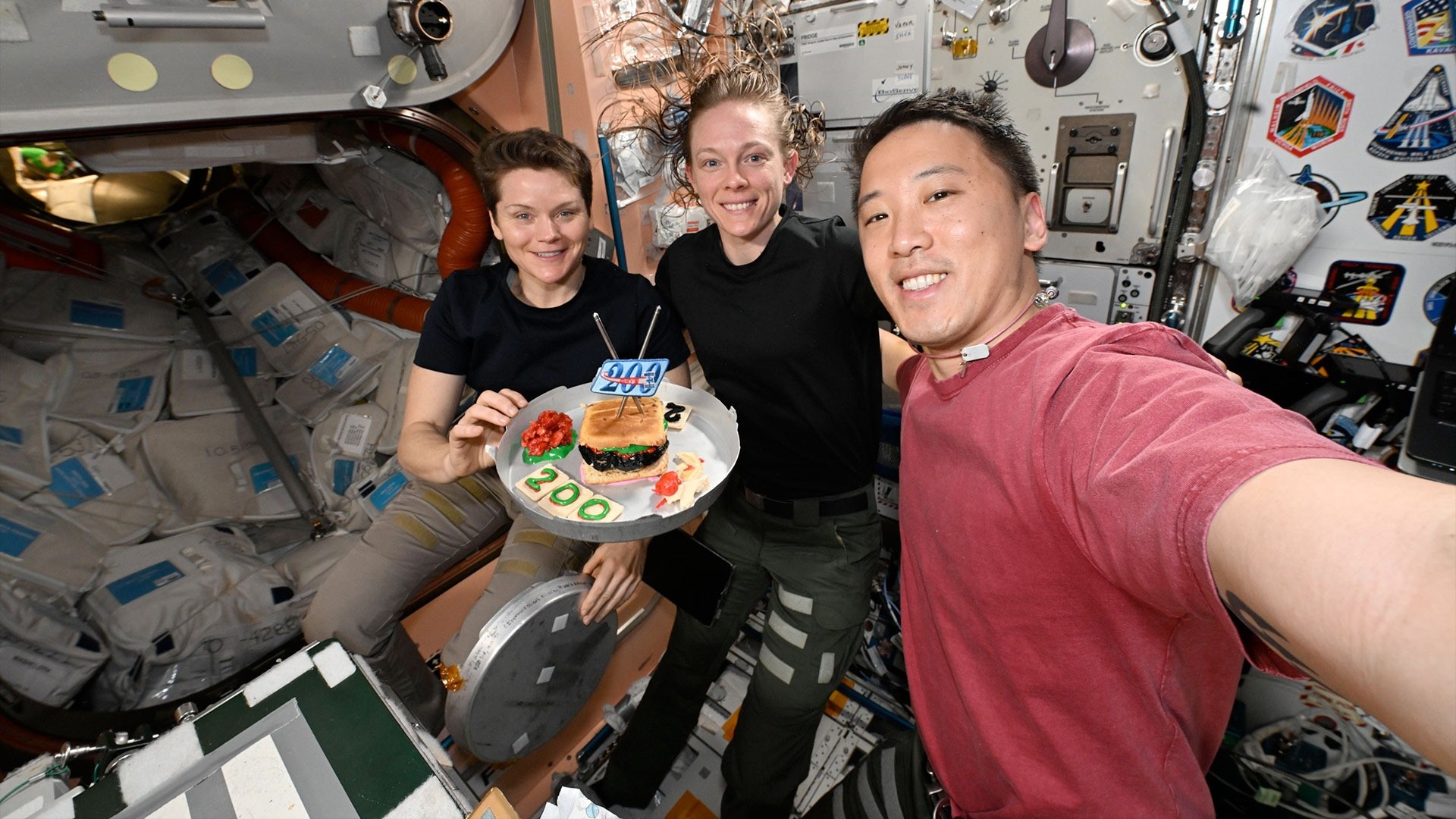Destroyed Satellite's Debris Falling into Atmosphere
Space debris cleanup suggestions by fiction writers have been made repeatedly; all have been ignored by the world's space agencies. Now, we have a real problem.
This past week, ISS astronauts have ducked into a Russianspace capsule for protection from space debris:
The three astronauts, two Americans and one Russian,moved into the station's attached Soyuz TMA-13 spacecraft at 12:35 p.m. EDT(1635 GMT) as a safety precaution in case the debris — a small piece of a spent satellite motor — slammed into the orbiting lab and ripped a hole in its outer hull. The astronauts were ready to evacuate the space station if the debris hit the station and depressurized its living space.
This follows the incident last month in which a Russian Cosmos 2251 satellite improbably collided with an Iridium 33 satellite,creating enormous debris clouds:
According to an e-mail alert issued by NASA today,Russia's Cosmos 2251 satellite slammed into the Iridium craft at 11:55 a.m. EST(0455 GMT) over Siberia at an altitude of 490 miles (790 km). The incident was observed by the U.S. Defense Department's Space Surveillance Network, which later was tracking two large clouds of debris.
Satellite debris has been a problem for many years. Ofcourse, you'd think NASA and all the other space agencies would be ready with a solution.
Wrong.
Breaking space news, the latest updates on rocket launches, skywatching events and more!
Science fiction writers of all sorts, on the other hand,have been sounding the warning for generations, and weaving their imaginative solutions into popular culture.
For example, take a look at the 1977 television series Quark.This comedy, created by legendary writer Buck Henry, described the activities of the United Galaxies Sanitation Patrol Cruiser, an interstellar garbage scow.
Richard Benjamin played Adam Quark, who worked to cleanup trash in space. He is ably assisted by the Bettys,played by the Doublemint twins (Cyb and Patricia Barnstable).
In his 1978 novel The Fountains of Paradise,Arthur C. Clarke uses Operation Cleanup To to make sure that low earth orbit is clear of debris for the newly constructed space elevator.
"Fortunately, the old orbital forts were superbly equipped for this task. Their radars — designed to locate oncoming missiles at extreme ranges with no advance warning — could easily pinpoint the debris of the early Space Age. Then their lasers vaporized the smaller satellites, while the larger ones were nudged into higher and harmless orbits."
Fans may also recall Planetes, an anime series published by Makoto Yakimura in Japan starting in 1999. The series follows a team of debris cleaners who clear space junk from flight paths.
Sources: Station Astronauts Take Shelter from Space Debris and U.S.Satellite Destroyed in Space Collision.
(This Science Fiction in the News story used with permission of Technovelgy.com)
Join our Space Forums to keep talking space on the latest missions, night sky and more! And if you have a news tip, correction or comment, let us know at: community@space.com.

Space.com is the premier source of space exploration, innovation and astronomy news, chronicling (and celebrating) humanity's ongoing expansion across the final frontier. Originally founded in 1999, Space.com is, and always has been, the passion of writers and editors who are space fans and also trained journalists. Our current news team consists of Editor-in-Chief Tariq Malik; Editor Hanneke Weitering, Senior Space Writer Mike Wall; Senior Writer Meghan Bartels; Senior Writer Chelsea Gohd, Senior Writer Tereza Pultarova and Staff Writer Alexander Cox, focusing on e-commerce. Senior Producer Steve Spaleta oversees our space videos, with Diana Whitcroft as our Social Media Editor.
